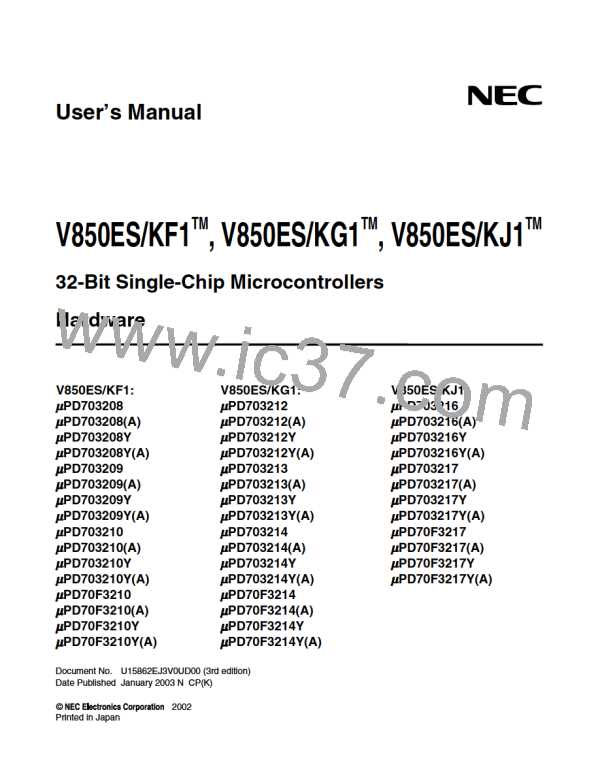CHAPTER 2 PIN FUNCTIONS
(a) Port mode
P90 to P915 can be set to input or output in 1-bit units by the port 9 mode register (PM9).
(b) Control mode (alternate function)
P90 to P915 can be set to the port mode or control mode in 1-bit units by the port 9 mode control register
(PMC9) (when used as the A0 to A15 pins, mode switching in 16-bit units is necessary).
(i) A0 to A15 (address bus) ... Output
These are the lower 16-bit address output pins within a 24-bit address on the address bus during
external access.
(ii) TXD1 (transmit data) ... Output
This is the serial transmit data output pin for UART1.
(iii) RXD1 (receive data) ... Input
This is the serial receive data input pin for UART1.
(iv) TI020, TI021, TI030, TI031 (timer input) ... Input
These are the external count clock input pins for the 16-bit timer.
(v) TO02, TO03 (timer output) ... Output
These are the pulse signal output pins for the 16-bit timer.
(vi) TI51 (timer input) ... Input
This is the external count clock input pin for the 8-bit timer.
(vii) TO51 (timer output) ... Output
This is the pulse signal output pin for the 8-bit timer.
(viii) SO01, SOA1 (serial output) ... Output
These are the serial transmit data output pins for CSI01 and CSIA1.
(ix) SI01, SIA1 (serial input) ... Input
These are the serial receive data input pins for CSI01 and CSIA1.
(x) CSK01, SCKA1 (serial clock) ... I/O
These are the serial clock I/O pins for CSI01 and CSIA1.
(ix) INTP4 to INTP6 (interrupt request from peripherals) ... Input
These are the external interrupt request input pins.
(iix) KR6, KR7 (key return) ... Input
These are the key interrupt input pins. Their operation is specified by the key return mode register
(KRM) in the input port mode.
User’s Manual U15862EJ3V0UD
88

 NEC [ NEC ]
NEC [ NEC ]